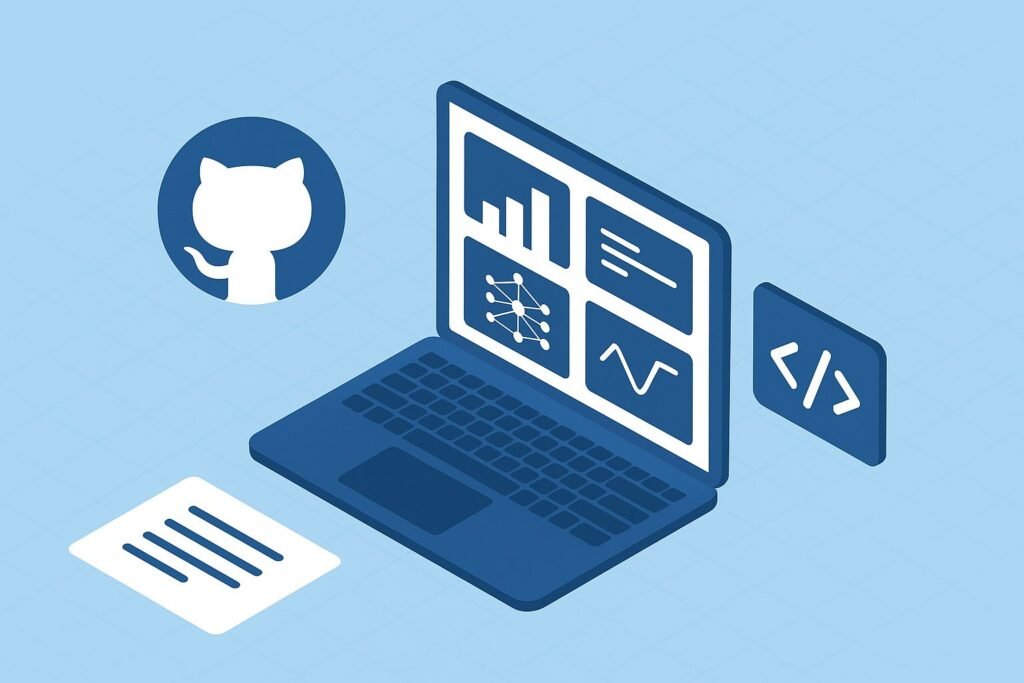Have you ever wondered how Netflix predicts the next show you’ll binge-watch, or how self-driving cars “learn” to navigate city traffic? Behind these innovations is machine learning (ML)—a field that has rapidly become one of the most in-demand careers in tech. If you’re curious about starting a machine learning career, you’re not alone. Reports suggest the global AI market will surpass $1.3 trillion by 2030, fueling a massive demand for ML engineers, data scientists, and AI researchers. Yet, many aspiring professionals feel overwhelmed: Where do I begin? What skills are essential? Do I need a PhD?
This guide is your roadmap. Whether you’re a student, a career switcher, or a professional upskilling, we’ll explore how to break into ML with confidence and clarity. See Top Machine Learning Careers
Step 1: Build a Strong Foundation in Mathematics and Statistics
Machine learning isn’t magic—it’s math at scale. Core concepts like linear algebra, calculus, probability, and statistics form the backbone of ML algorithms.
- Linear Algebra helps you understand vectors, matrices, and transformations—vital for deep learning and neural networks.
- Probability & Statistics equip you to handle uncertainty, evaluate models, and avoid misleading insights.
- Calculus powers optimization techniques like gradient descent.
Practical Tip: Instead of drowning in theory, learn math through coding. Use Python libraries like NumPy or SciPy to experiment. For example, visualize how changing a parameter in gradient descent affects convergence.
Relatable: Think of learning these concepts as understanding the “rules of the game” before you can design strategies to win.
Step 2: Learn a Programming Language (Python is King)
To build models, you need a language that’s both versatile and widely supported. Python dominates ML due to its simplicity and a massive ecosystem of libraries:
- Scikit-learn for beginner-friendly ML algorithms.
- TensorFlow and PyTorch for deep learning.
- Pandas and NumPy for data manipulation.
- Matplotlib and Seaborn for visualization.
Practical Tip: Start by solving small real-world problems. Instead of coding from scratch, modify existing models. For instance, tweak a sentiment analysis model to analyze customer reviews of your favorite brand.
Step 3: Get Comfortable with Data
“Machine learning” could easily be called “data learning.” The best algorithms fail without clean, relevant data. Skills you’ll need:

- Data Cleaning: Handling missing values, duplicates, and noisy data.
- Feature Engineering: Turning raw data into meaningful inputs.
- Exploratory Data Analysis (EDA): Identifying trends, anomalies, and patterns.
Key Data Skills vs. Tools
| Skills | Tools/Libraries | Example Use Case |
|---|---|---|
| Data Cleaning | Pandas, OpenRefine | Removing null values in survey data |
| Feature Engineering | Scikit-learn | Creating “age group” from age column |
| Data Visualization | Seaborn, Tableau | Showing sales trends over time |
Relatable Insight: Think of raw data as uncut diamonds. Your job is to polish them until they shine.
Step 4: Explore Machine Learning Algorithms
Once you have your math, coding, and data basics in place, dive into the algorithms that power ML. Start with the classics:
- Linear Regression: Predict continuous values.
- Logistic Regression: Classification problems.
- Decision Trees & Random Forests: Interpretability with solid performance.
- Support Vector Machines (SVMs): Powerful for complex classification.
- K-Means Clustering: Unsupervised learning for grouping data.
Practical Approach: Instead of memorizing formulas, focus on understanding when and why to use each algorithm. For example, logistic regression is perfect for predicting whether a loan applicant will default (yes/no).
Step 5: Deep Dive into Specializations
Machine learning is broad. After the basics, choose a path:
- Natural Language Processing (NLP) → Chatbots, sentiment analysis, language translation.
- Computer Vision → Self-driving cars, medical imaging, facial recognition.
- Reinforcement Learning → Robotics, gaming, recommendation systems.
Example: If you’re fascinated by healthcare, explore ML applications in disease prediction or drug discovery.
Insider: Employers often prefer specialists who can apply ML to specific industries rather than generalists with shallow knowledge.
Step 6: Build Real Projects & a Portfolio
Learning theory is only half the journey. Employers want proof of application. Create a portfolio showcasing diverse projects.

Ideas for beginner-to-advanced projects:
- Predict house prices using Kaggle’s housing dataset.
- Build a movie recommendation system using collaborative filtering.
- Create a CNN model that classifies images of cats vs. dogs.
- Deploy a chatbot using NLP models.
Tip: Host your projects on GitHub and explain your thought process in READMEs. Recruiters love clarity.
Step 7: Leverage Online Resources & Communities
The beauty of starting a machine learning career today is the abundance of resources.
Learning Platforms
- Coursera (Andrew Ng’s ML course)
- fast.ai (hands-on deep learning)
- edX, Udemy, DataCamp
Communities
- Kaggle for competitions and datasets.
- Reddit’s r/MachineLearning for discussions.
- LinkedIn groups for networking.
Relatable: Treat Kaggle like a gym—it’s where you practice, fail, and grow stronger without risking your “real-world” career.
Step 8: Gain Practical Experience (Internships, Freelancing, Open Source)
Theory and projects are great, but nothing replaces industry exposure. Look for:
- Internships at tech companies or research labs.
- Freelancing gigs (Upwork, Fiverr, Toptal) to build applied experience.
- Open-source contributions to ML libraries (like Scikit-learn).
Even small contributions—like fixing bugs or improving documentation—can make your resume stand out.
Step 9: Understand the Career Landscape
When starting a machine learning career, clarity on roles is essential.
ML Career Paths
| Role | Focus Area | Avg. Salary (US, 2025 est.) |
|---|---|---|
| ML Engineer | Building and deploying models | $130,000+ |
| Data Scientist | Data analysis & insights | $120,000+ |
| AI Research Scientist | Cutting-edge research | $140,000+ |
| NLP/Computer Vision Eng. | Specialized applications | $125,000+ |
Pro Insight: If you’re just starting, aim for hybrid roles (like data analyst → ML engineer) before targeting research-heavy positions. See Future-Proof Tech Career
Step 10: Stay Ahead with Continuous Learning
Machine learning evolves rapidly—what’s state-of-the-art today may be outdated in two years. Keep learning through:
- Research papers (arXiv, Google Scholar).
- Blogs (Towards Data Science, Analytics Vidhya).
- Newsletters and podcasts (Lex Fridman Podcast, DataTalks).
Relatable Example: Think of ML like fitness—consistent small workouts (reading, coding, experimenting) matter more than occasional marathons.
Key Takeaways for Starting a Machine Learning Career
- Focus first on math, programming, and data skills.
- Learn by doing projects, not just reading theory.
- Specialize in areas aligned with your passion (NLP, vision, healthcare, finance).
- Build visibility with a portfolio, Kaggle, and GitHub.
- Stay curious, adaptable, and consistent in upskilling.
Conclusion: Your ML Career Starts Now
Breaking into machine learning can feel intimidating, but remember: every expert started as a beginner struggling with their first dataset. The difference is persistence and practice. By following this roadmap, you’ll move from theory to practical application—and eventually into a rewarding career shaping the future of AI.



The article is very helpful and provides a precise overview of ML career roadmap. Looking forward to read more in depth.